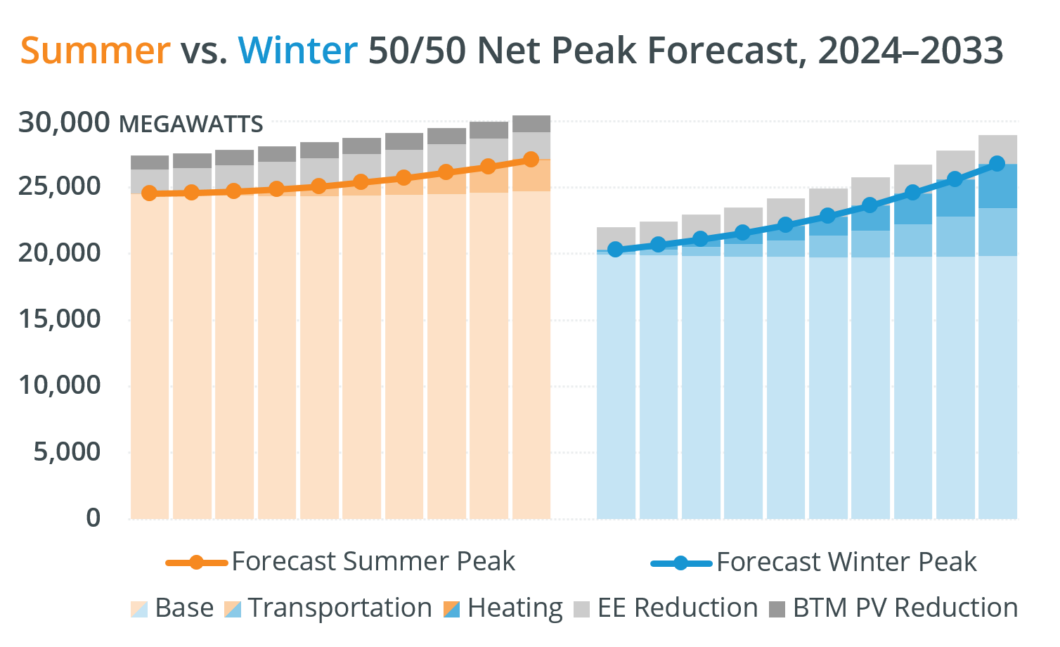CELT 2024: Expanded economic model informs long-term forecast

Accurately predicting how much electricity the region will use in future years requires ISO New England to weigh a number of variables, from historical demand and weather patterns to state policies driving decarbonization.
Economics also plays a pivotal role, and the ISO’s load forecasters are examining its influence in greater detail than ever before.
This new approach is reflected in ISO New England’s 2024–2033 Forecast Report of Capacity, Energy, Loads, and Transmission (CELT Report)—a key planning document that aims to size up the region’s energy landscape for the next 10 years.
Past editions of the CELT Report have predicted summer and winter peak demand with high accuracy. However, in recent years, actual energy consumption has been lower than the CELT outlined. The ISO aims to close this gap by incorporating additional economic indicators into its forecast models.
In the past, a primary forecast input has been real gross state product (RGSP), an inflation-adjusted measure of the market value of all goods and services produced in each of the six New England states. In recent years RGSP has steadily increased, which points to ongoing regional economic growth. But energy consumption has remained relatively flat, even after accounting for estimated load reductions due to energy efficiency and behind-the-meter solar.
The ISO’s new, more nuanced approach considers RGSP alongside projections for population, employment, and real personal income per capita. Different blends of these variables are used for each of the states, producing a more precise forecast. The results show less growth in annual energy use than previous CELT forecasts, while levels of projected peak demand are similar those produced from prior methods. This alignment gives the ISO confidence its energy forecast will be more accurate going forward.

Net peak demand is a measure of the highest amount of electricity used in a single hour. As has been the case for the last few decades, the expected peak for each year of the 2024 CELT forecast occurs during the summer.
Assuming typical peak weather conditions, the winter peak in 2033/2034 is projected to nearly match the 2033 summer peak at about 27,000 megawatts (MW). This convergence reflects the region’s increasing reliance on electricity to power heating systems and vehicles. The forecast peaks would be up to 3,000 MW higher without the influence of energy efficiency programs, which have an impact in both summer and winter, and behind-the-meter solar, which affect summer peaks only because winter peaks happen after sunset.
The ISO forecasts use typical weather conditions at times of peak demand to develop what is known as the 50/50 forecast, meaning there is a 50% chance that peak demand will be above or below the forecast. The 50/50 summer net peak forecast grows from 24,553 MW in 2024 to 27,052 MW in 2033, a 10% change. The winter peak forecast grows from 20,308 MW to 26,768 MW, a 32% change.
Annual net energy use is projected to grow from 119,179 MW in 2024 to 140,001 MW in 2033, a 17% change.
Learn more about the 2024 CELT Report
- Categories
- Publications
- Tags
- CELT, forecast, peak demand
